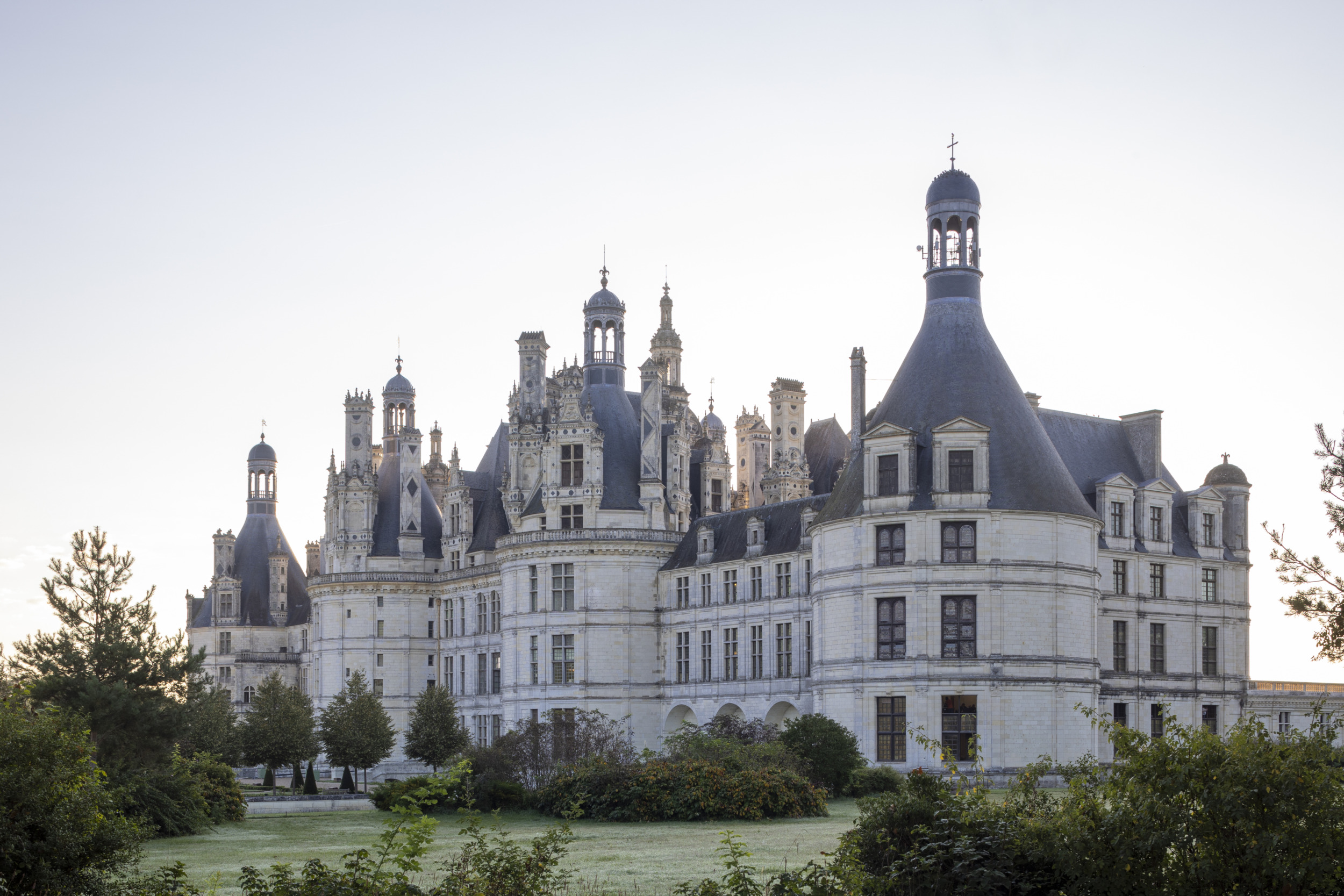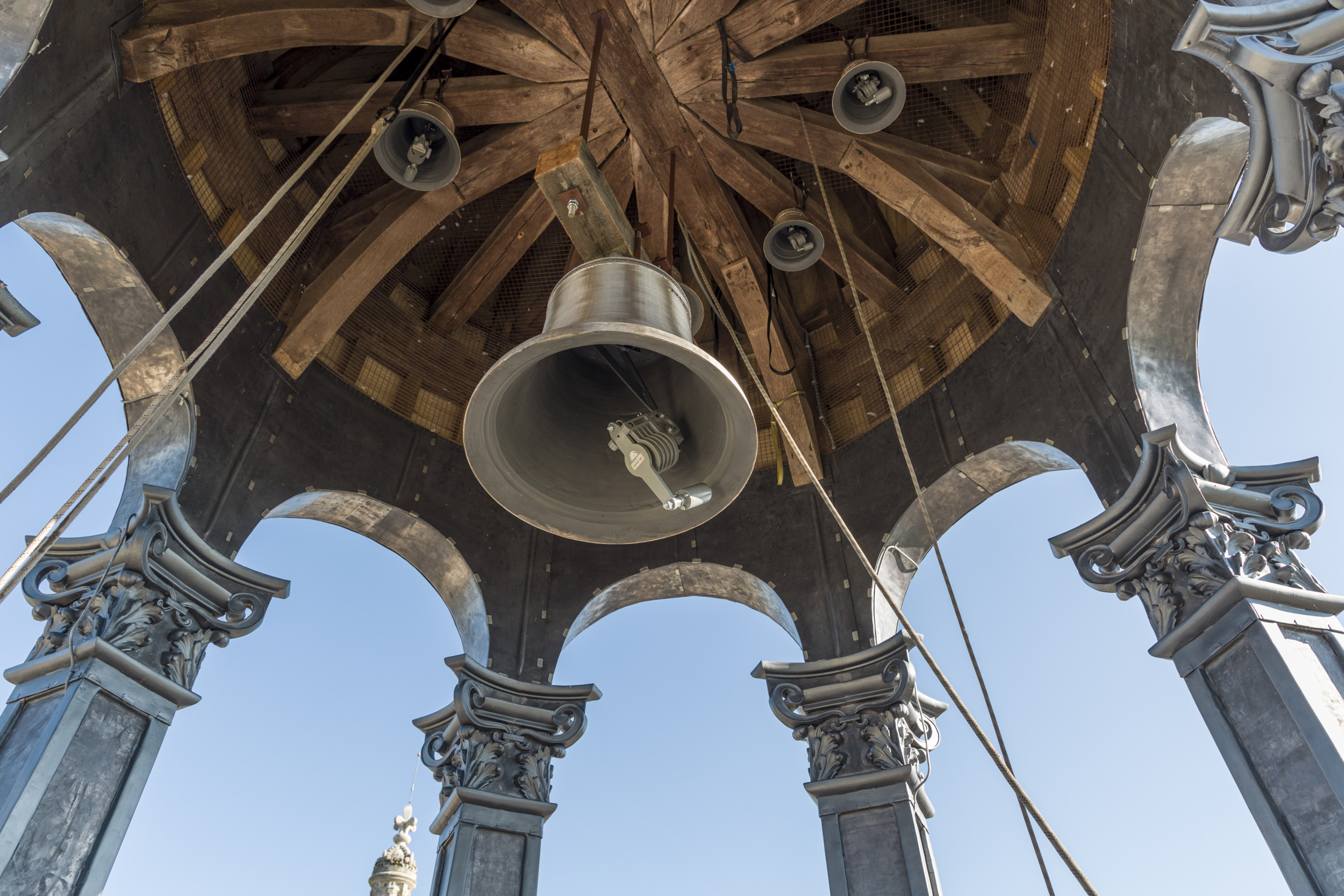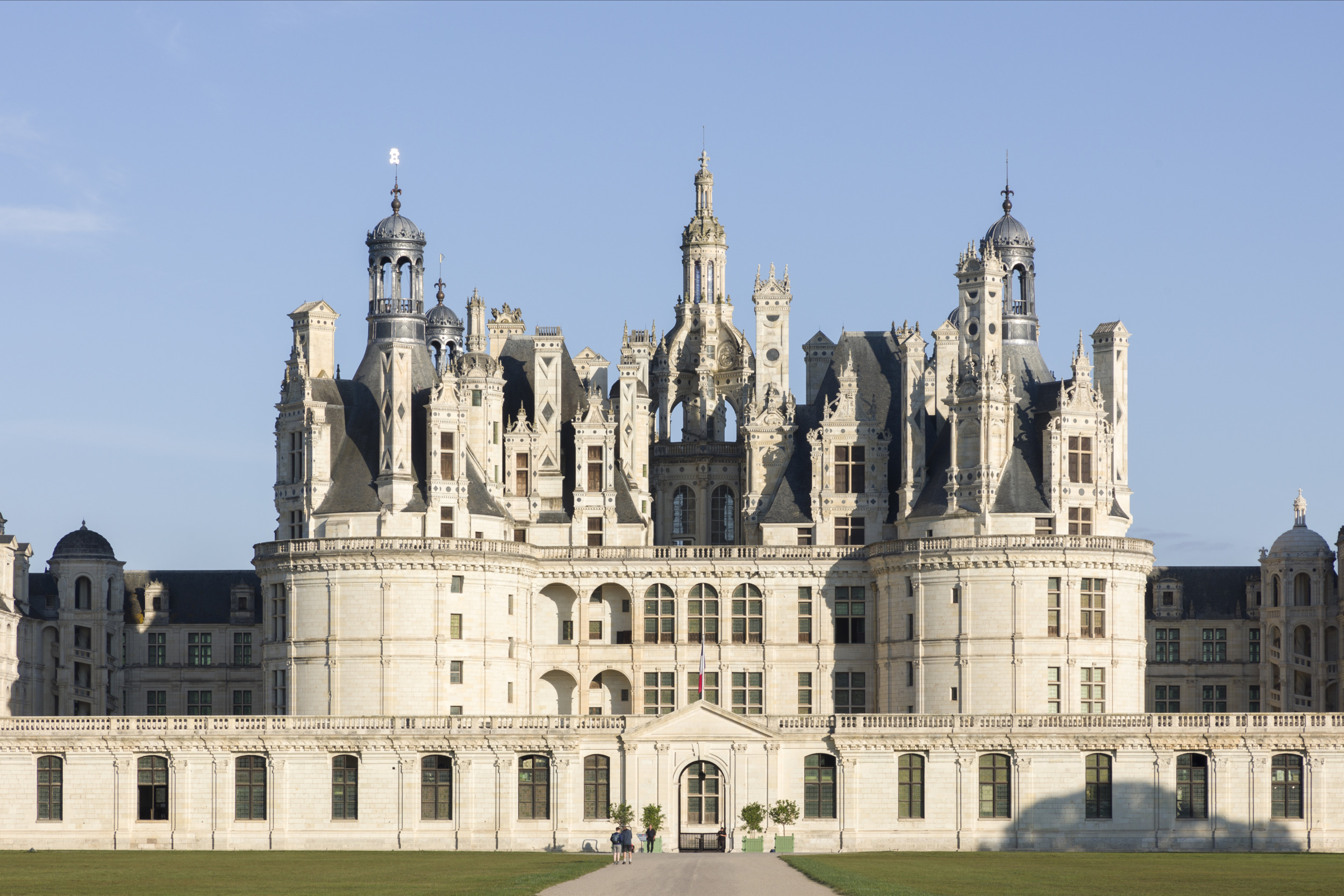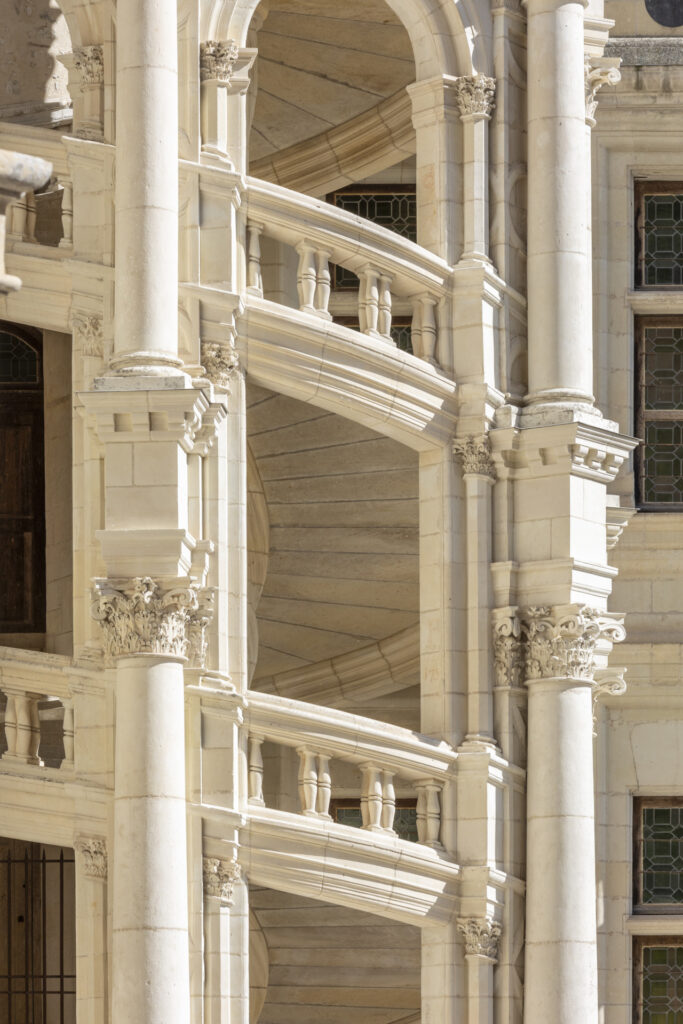The construction of the château of Chambord began in 1519 at the request of King François I as a symbol of his power written in stone, in the heart of the largest enclosed forest park in Europe. The plan of the castle and its decorations were conceived around a central axis that has become indispensable: the famous double staircase by Leonardo da Vinci, an ascending spiral that leads to an abundance of chimneys and sculpted capitals on the terraces. It was not until the reign of Louis XIV that the building was completed at the end of the 17th century. It was also at this time that the surroundings of the castle were developed: stables were built and the river Cosson, which crosses the park, was partly channeled to clean up the site. The State became the owner of the castle in 1930.
CHÂTEAU OF CHAMBORD
RESTORATION OF THE LANTERNS
This operation of exceptional scope responds to a double challenge of safety and heritage enhancement, particularly the restitution of the lead decorations. Our intervention focuses on the frameworks of the Château of Chambord, the end points of which were threatened by structural and watertightness problems in the lanterns. The objective is to work simultaneously on the six lanterns composed of the four lanterns of the keep: Dieudonné Tower, Henri V Tower, François I Tower, Tour Caroline de Berry Tower; as well as the lanterns of the Robert de Parme Tower and the Chapelle Tower. Apart from a few occasional repairs, no restoration has been carried out on the lanterns of the castle for over 50 years.eras well as the lanterns of the Robert de Parme Tower and the Chapel Tower. Aside from a few occasional repair interventions, no restoration work had been carried out on the castle's lanterns for over 50 years.
The monument is now covered by six spectacular scaffoldings of 54 meters which allowed to strip the lanterns of their lead cover to replace the overly damaged wooden pieces and to restore the others. These lanterns weigh an average of 15 tons each and measure 12 meters high including the copper finials and weathervanes. Accompanied by exceptionally skilled craftsmen, we will restore the lead ornaments that have disappeared, such as the salamanders, the fleurs de lys, the volutes and the modenatures. The project also includes the waterproofing of the zinc and slate roofs and the gilding of the weathervanes.
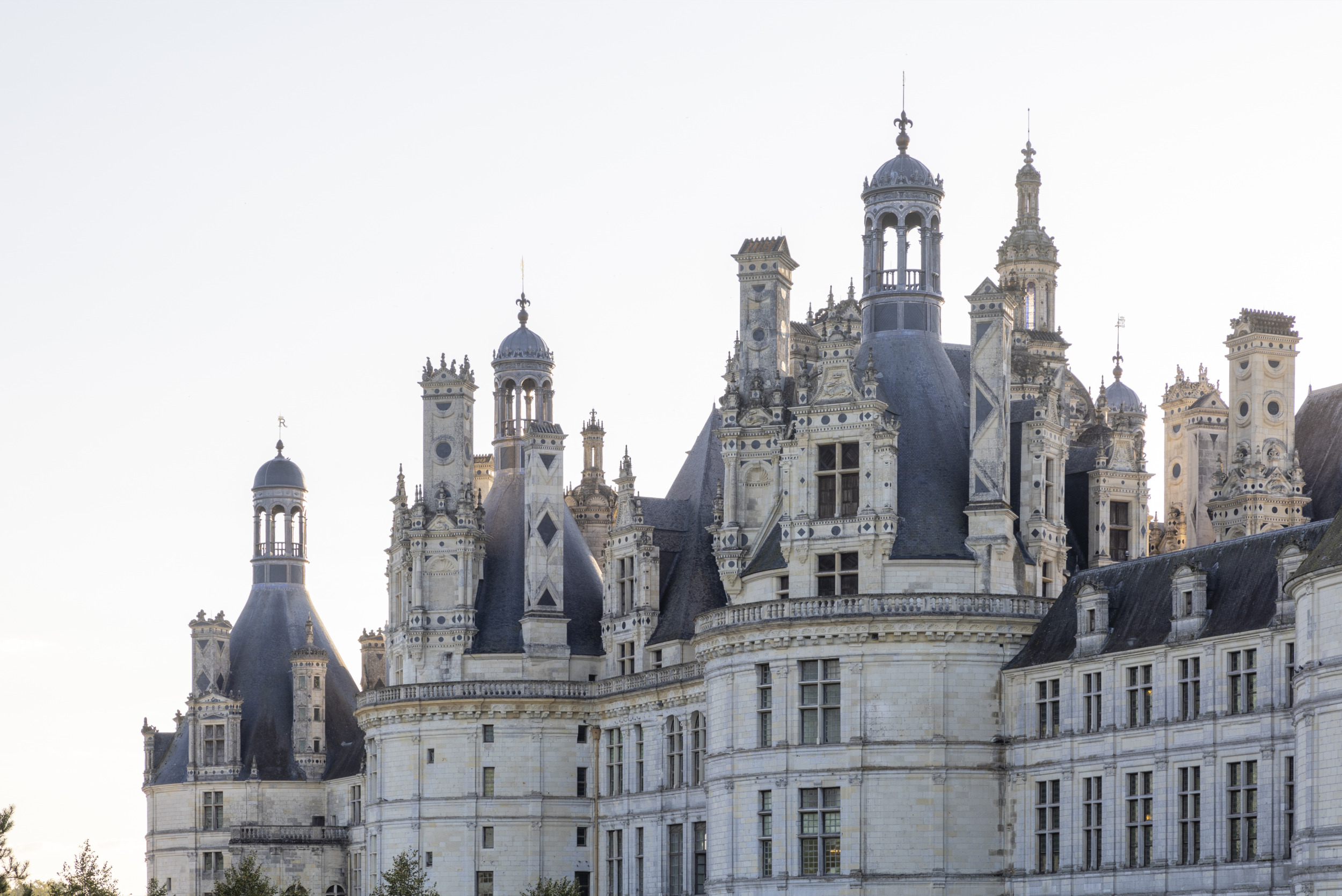
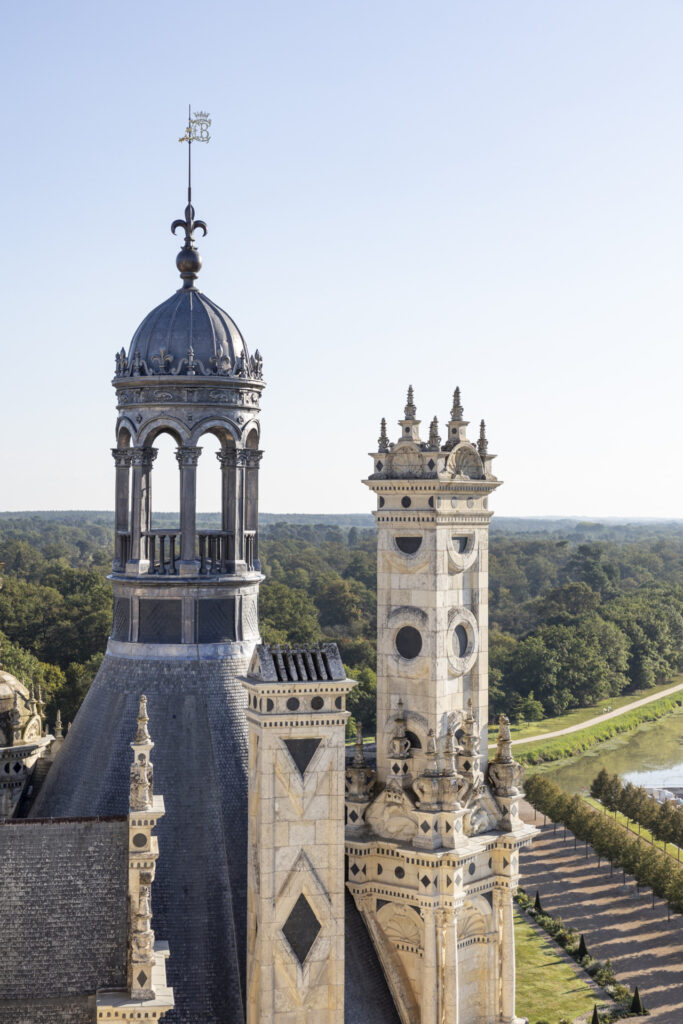
The challenge of this restoration is to re-establish the silhouette of the Château of Chambord as close as possible to its original design
Chatillon Architects is simultaneously involved in several operations at the Domaine national de Chambord, including the ongoing restoration of the moat and the François Ier staircase, as well as studies on the restoration of the door and window components of the castle.
